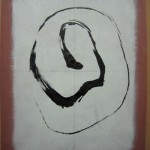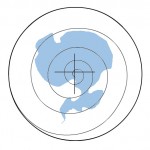
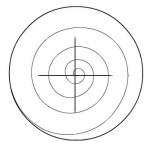
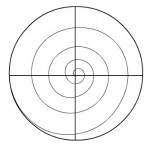
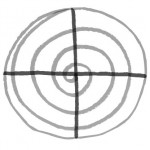
In the animation, Insights, the circle, the spiral and the cross were combined to identify physical structures within the Antarctic environment: bottom water circulation, the circumpolar current, and the southern pivot point of the earth’s rotation. To some people these forms represent the telescopic cross hairs in a rifle, and the spiraling thread within a rifle’s barrel. They can therefore evoke feelings of death and destruction. To others these same forms can evoke feelings of unity , wholeness, and new growth.
As comments on the image and the animation have arrived, I have learned what thoughts and feelings have been conveyed through them. After reading these comments and reflecting on the ideas and feelings I intend to convey, I have made some changes.
My aim is to convey an idea of how Antarctica works as a system to replenish life on earth, and a feeling of hope about our ability to reduce our harmful impact on the environment.
The animation was inspired by encounters with people and places, and with works of art and science that identify humanity as part of a living world.
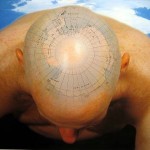
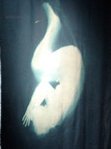
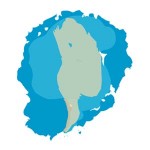

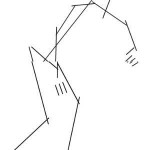
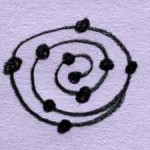
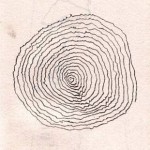
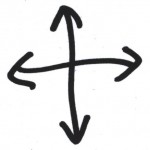
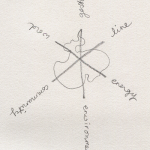
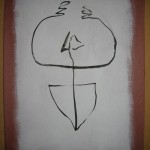

Heresay and Fact: the Ginko trees of Antarctica
Perhaps such gestures and lines as these were used by humans before speech, to convey knowledge about environments (Corballis, 2009). As infants our knowledge of environments came through touch. Such early evolutionary and developmental memories have been identified by Freud the ‘archaeology of the mind’, and as the ‘Old brain’ by artist Len Lye (Burke, 2008; Cantrill, 2002).
In Antarctic Animation, the circle, the spiral and the cross function as metaforms. Here, a metaform is defined as a gesture or line that conveys both subjective and objective knowledge. Depending on the experience of the viewer, they will coney different meanings.
The Shorter Oxford English Dictionary (OED) (1973, p. 1313), defines the chief senses of the Greek prefix, Meta, as ‘sharing, action in common; … change (of place, order, condition, or nature)’.
In Antarctic Animation, the circle, spiral and cross share objective and subjective meanings. These meanings, however, are not fixed. On the contrary, these forms are combined to represent an evolving, collective, body of knowledge.
One meaning given for the word, ‘Form’, is ‘a body considered in respect of its outward shape’, especially that of a person. Kant is also cited as defining the word, in 1803, as ‘The (subjective) factor of knowledge which gives reality and objectivity to the thing known’ (1972, p. 272).
In Antarctic Animation, the gesturing human form is used to evoke empathic, kinesthetic knowledge of Antarctica. Through its gestures, the human form ‘gives reality and objectivity to the thing known’, where ‘thing known’ is a feeling. Like the poet, Vincent Buckley (Exiner & Kelynack, 1994, p. 31), I distinguish feeling from emotion:
The difference between emotion and feeling would seem to be that the former is simply a temporary response to experience, while the latter is something by which the person becomes attached to actuality. It is thus both a WAY of experiencing the actual world, and a capacity for keeping that experience constant.
Feelings conveyed though Antarctic Animation reflect world views of people who have connected through their senses to Antarctica. Such views were identified as more constant than emotions. Animations were made to reflect both physical and imagined connections of this kind.
Animations that simulate the act of drawing (drawing gestures) appeal to one’s ability to kinesthetically recall what is being observed (Watts 1977). In other words, as you watch the lines appearing, you may imagine yourself drawing.
Hand-drawn and digital lines were both used to evoke different ways of reading Antarctica: through conscious, linear thoughts, and through unconscious, spatial, sensory engagement.
To evoke linear, sequential thoughts, digital line drawings are accompanied by written words. Written sequential thoughts are consciously continuous.
Unconscious feelings and ideas are characteristically discontinuous. However, drawing is a way to trace connections between these. Line drawings trace spatial, rather than linear patterns. Hand-drawn lines also evoke a visceral, or physical response. A visceral response can trigger unconscious feelings and ideas.
Daniel Chander (2005) cites Anthony Wilden (1987, 222) declaring that, ‘no two categories, and no two kinds of experience are more fundamental in human life and thought than continuity and discontinuity’, and that these experiences of the world are reflected in analogical and digital representations.
Chander proposes that
We have a deep attachment to analogical modes and we tend to regard digital representations as ‘less real’ – at least initially … The analogue/digital distinction is frequently represented as ‘natural’ versus ‘artificial’. Perhaps this is connected in part with the notion that the unconscious – that which we regard as ‘deepest’ within us – appears to operate analogically (Wilden 1987, 224). The privileging of the analogical may be linked with the status of the unconscious and the defiance of rationality in romantic ideology (which still dominates our conception of ourselves as ‘individuals’).
Because Antarctic Animation is an on-line work, compiled using digital media, its gestures and lines are digital. However, both digital (software) and analogue (pencil) tools were used to made hand-drawn line animations. Because much of the work was hand-drawn frame-by-frame, a visceral sensation of drawing is conveyed. These animations trace human gestures that were performed in a physical space.
The animation, Insights, represents a coming together of places, people and ideas. As an animated gesture, it combines insights that were gained through encounters with many places, people and ideas.
The spiral represents dynamic forces that drive biological and environmental change. It also represents growth and transformation.
The circle represents the Antarctic environment as a meeting place for sharing knowledge. As a continent of science, Antarctica attracts many nations to explore our place in the world.
The cross marks the one grounded pivot point of the spinning earth. It also represents a convergence of ideas. It represents the convergence of different kinds of knowledge that combine to reveal Antarctica as a conveyor of global change.

